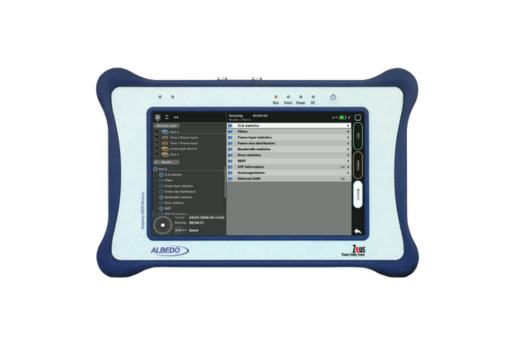Performance measurement of a BC running the ITU-T G.8275.1 profile which is deployed in networks with full timing support in all their nodes. In practical terms, full timing support requires that all network nodes implement the T-BC function.
ITU-T G.8273.2
The Precision Time Protocol (PTP) Boundary Clock Test, defined in ITU-T G.8273.2, is a set of recommendations and procedures for testing and verifying the performance of PTP Boundary Clocks (T-BC). PTP Boundary Clocks play a critical role in PTP networks by bridging domains and maintaining synchronisation accuracy.
The standard ITU-T G.8273.2 defines the required performance level for Telecom Boundary Clocks (T-BCs) and Telecom Time Slave Clocks (T-TSCs). The accuracy level required for these devices in terms of Time Error (TE) and other performance metrics derived form the TE is often in the range of a few nanoseconds. For this reason special measurement procedures are often required. Testing procedures and methodologies for PTP Boundary Clocks may vary, but G.8273.2 provides guidelines for conducting these tests to verify that a T-BC is capable of fulfilling its role in maintaining accurate and synchronised time in PTP networks. It helps to ensure that the T-BC is reliable and meets the required performance standards for accurate time distribution.
.png)
PTP Boundary Clock Test
Some fundamental features of PTP Boundary Clock, to be verified using an ALBEDO xGenius or a Zeus tester, are:
Boundary Clock Functions: The T-BC should be tested for its ability to perform boundary clock functions, including packet timestamping, timestamp correction and clock filtering, as required by the PTP standard.
Port Synchronisation: Testing should ensure that the T-BC can synchronise its ports with the incoming PTP signals and effectively distribute the synchronised time to its downstream devices.
Transparent Clock Functions: If the T-BC supports transparent clock functionality, it should be tested for its ability to accurately process and compensate for the transit time of PTP packets through the device.
Fault Tolerance: The T-BC should be tested for its ability to handle network faults and disturbances, such as link failures, grandmaster changes, and clock source changes, without causing significant disruption to the timing signals.
Timing Accuracy: The T-BC should be tested for its ability to provide accurate timing information to connected devices. This includes measuring the T-BC’s timing accuracy, clock stability and its ability to mitigate the effects of network delay and packet delay variations.
Performance Metrics: Testing should include the monitoring and reporting of various performance metrics, including TE and MTIE / TDEV , to ensure that the T-BC meets the required performance standards.
Compliance with PTP standards: The T-BC should be tested for compliance with PTP standard specifications, including IEEE 1588 and ITU-T G.8273. This will ensure that the T-BC operates in accordance with the established protocols and requirements.

Testers, xGenius and Zeus
The main ALBEDO testers, xGenius and Zeus, are equipped with two ports that can be configured independently as master or slave:
Master: The tester is a PTP master clock. The main purpose of this mode is not to make measurements, but to stress the network, including the slave.
Slave: In this case the Tester replaces the Slave. The Tester processes the information received from the Master and tries to follow the time signal in the same way as any other PTP Slave Clock.
Two configurations are possible:
- Master + Slave (Port A & Port B)
- Slave + Slave (Port A & Port B)
PTP test for Boundary Clocks (BCs) and Transparent Clocks (TCs). In this mode, xGenius port A operates in master emulation mode and port B measures TE and other performance metrics from the device under test.
About xGenius and Zeus tester
Advanced tester equipped with a large capacitive screen suitable for labs and field operations. The unit is able to test Ethernet/IP networks up to 10Gb/s while supports PTP/NTP protocols with Master/Slave emulation. Performance and Quality tests are possible at all opt/elect interfaces including GbE/T1/E1/E0/C37.94 and Datacom. The One-way delay GPS assisted is good for Substations maintenance and it has a built-in Rubidium oscillator to continue working perfectly in holdover mode.
- SyncE/PTP wander analysis/generation
- PTP master / slave
- GOOSE, SV, MMS protocol capture and save in PCAP format for analysis
- I/O time refs.: IRIG-B, PTP, NTP, SyncE, T1/E1, 10/2/1.5 Mb/s, 1PPS, 1PP2S, ToD, GNSS
- Internal Oscillator: Rubidium, OCXO
- FULL T1/E1 test Jitter/Wander, Pulse
- Asymmetry or One-Way-Delay with GPS
- Datacom: V11, V24, V35, V36, EIA530, EIA530A, Co-dir
- C37.94 analysis/generation
- SNMP/MIB support


_1920_x_700.webp)